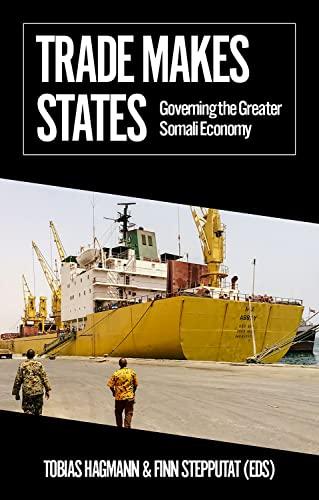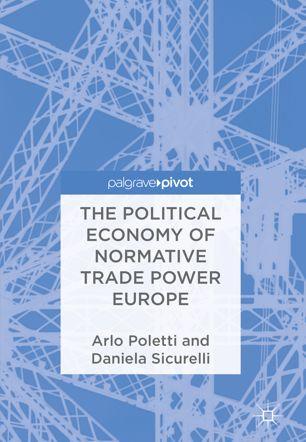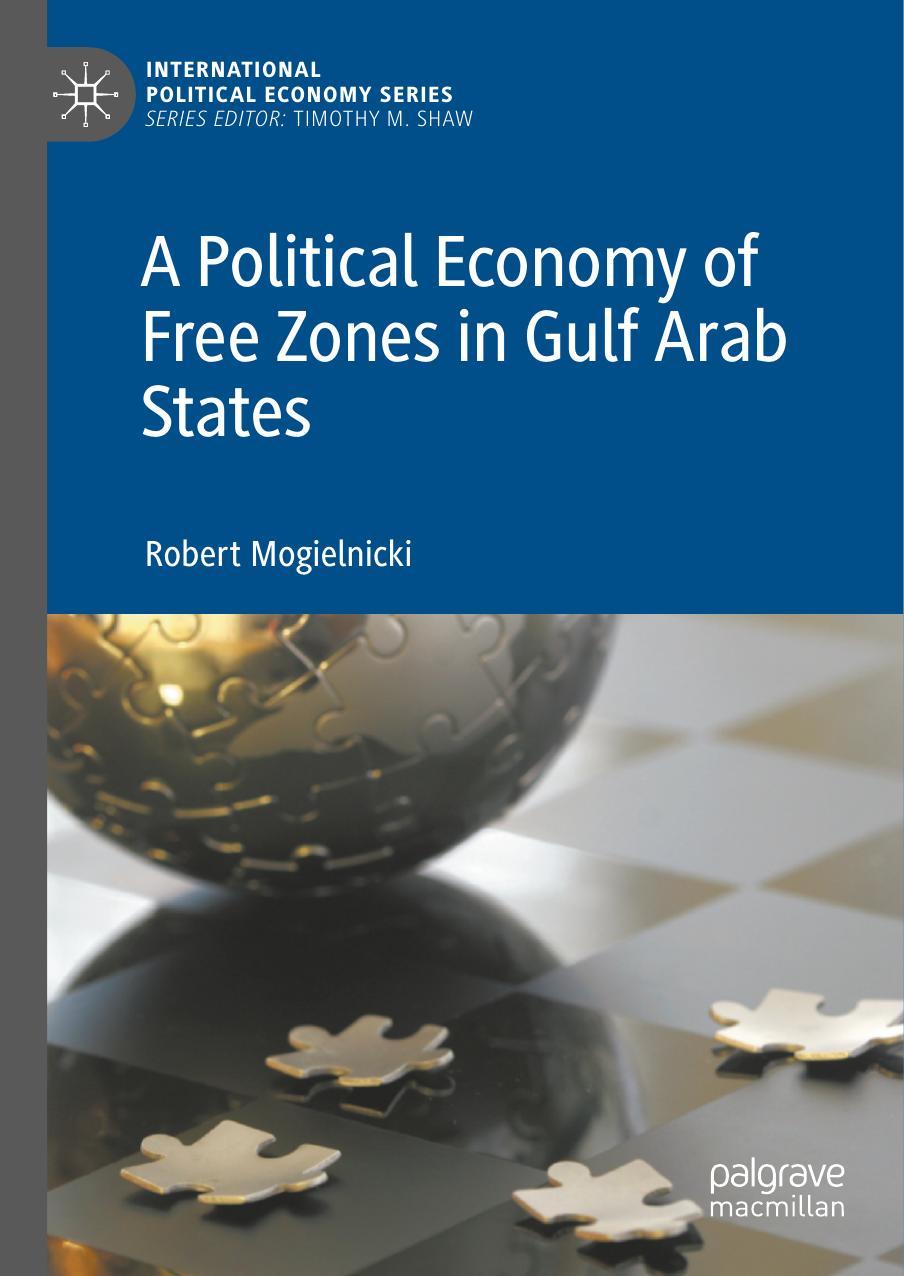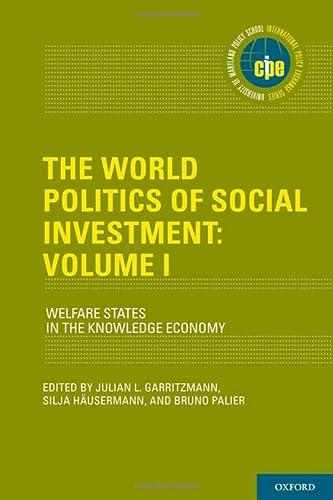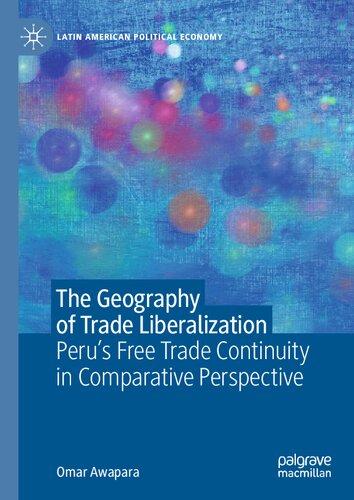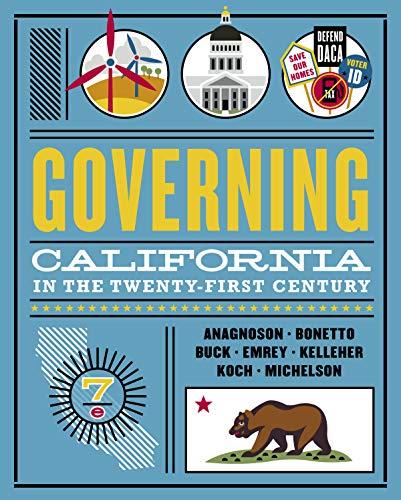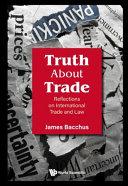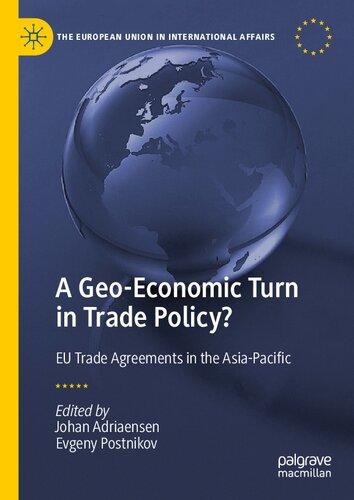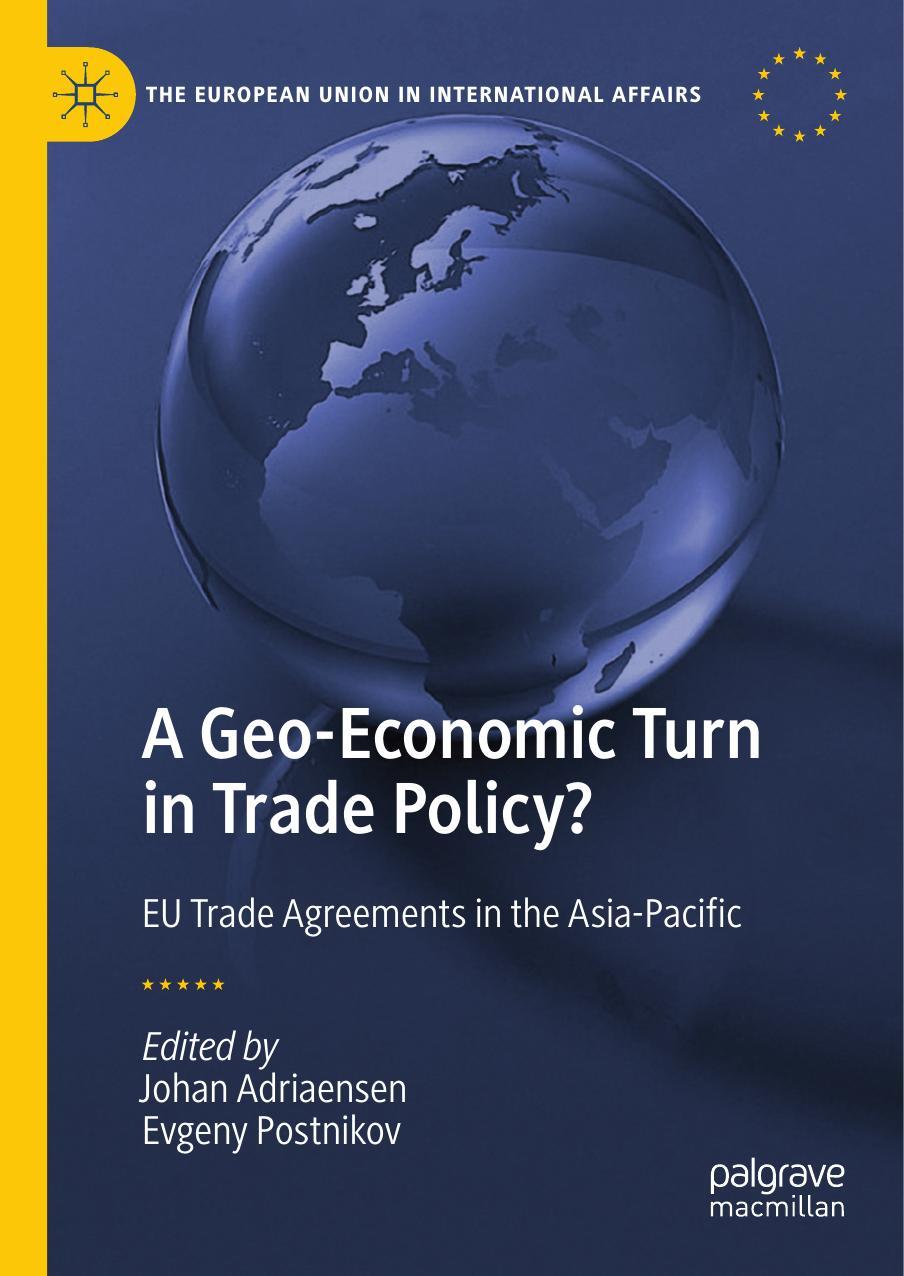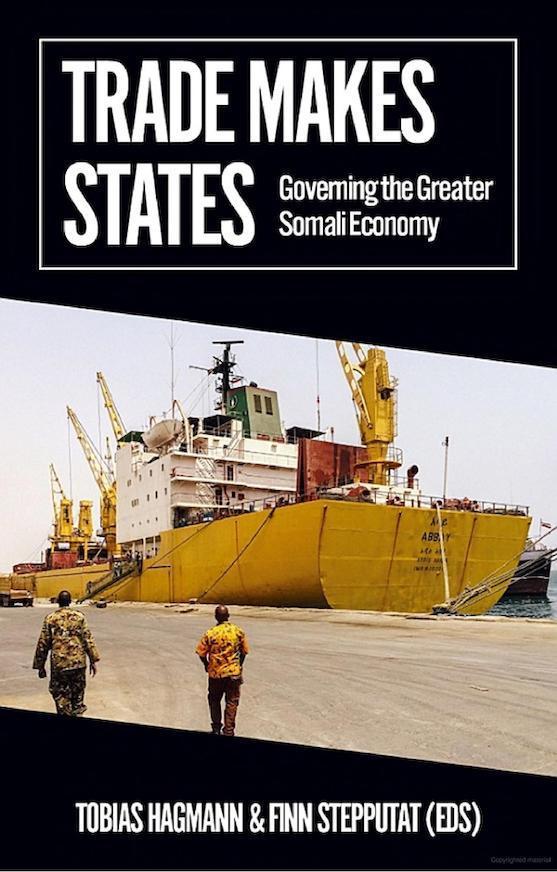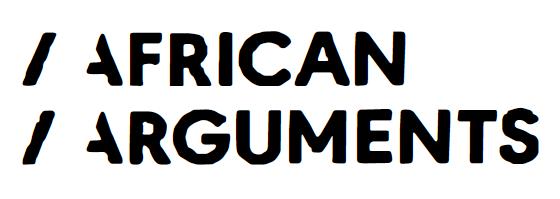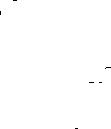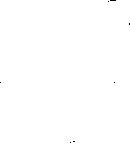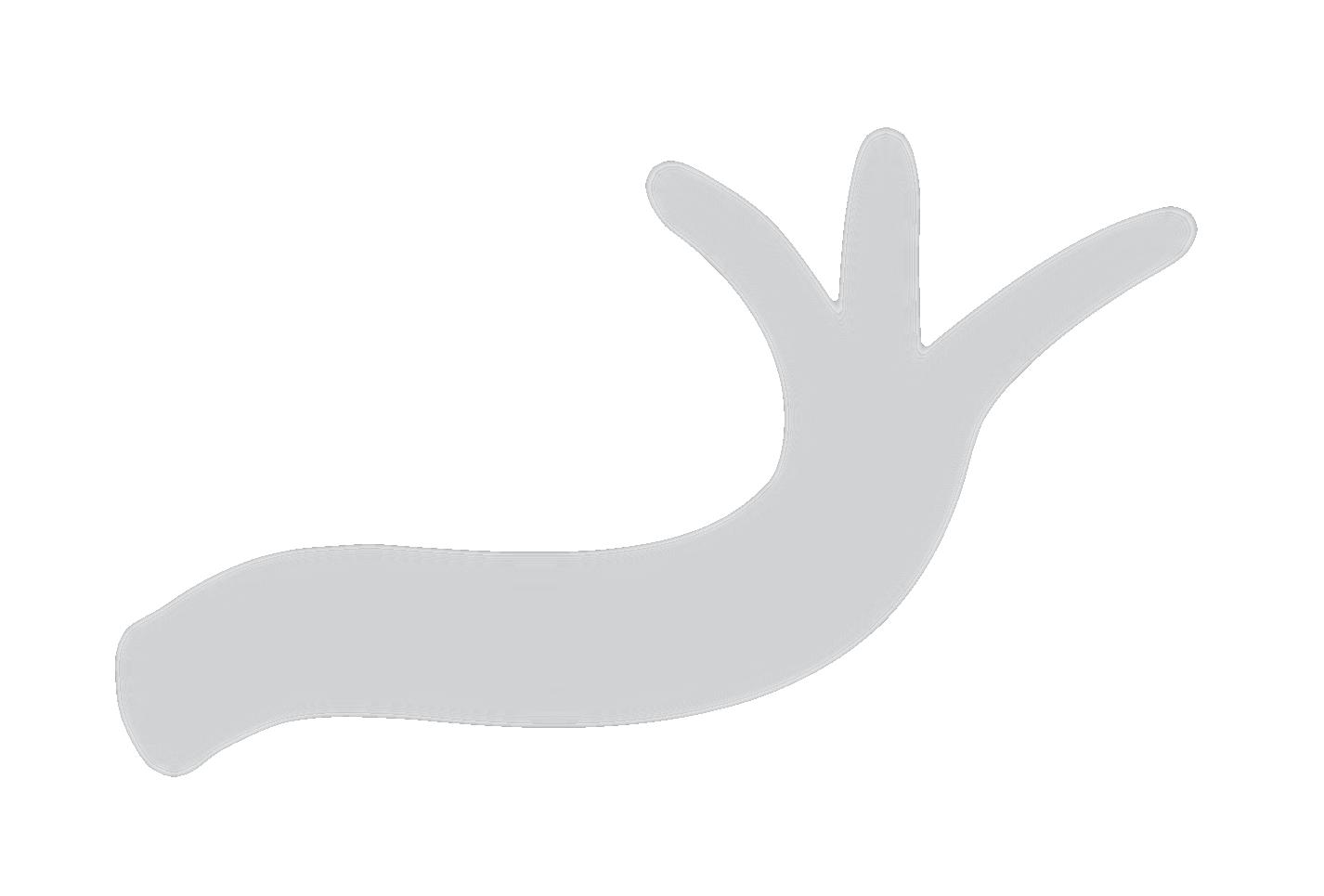OXFORD
UNIVERSITY PIIJ!SS
Oxford University Press isa department ofthe UniversityofOxford. It furthers the University's objective ofexcellencein research, scholarship, and education by publishing worldwide.
Oxford New York
Auckland CapeTown Dar es Salaam Hong Kong Karachi Kuala Lumpur Madrid Melbourne Mexico City Nairobi New Delhi Shanghai Taipei Toronto
Withofficesin
Argentina Austria Brazil Chile CzechRepublic France Greece Guatemala Hungary Italy Japan Poland Portugal Singapore SouthKorea Switzerland Thailand Turkey Ukraine Vietnam
OxfordisaregisteredtrademarkofOxford UniversityPress inthe UK andcertainother countries.
Publishedinthe UnitedStatesofAmerica by OxfordUniversityPress 198 Madison Avenue, NewYork, NY 10016
Copyright©Tobias Hagmann and Finn Stepputat 2023
All rightsreserved. Nopartofthispublication may bereproduced, storedinaretrievalsystem,ortransmitted, in any form or by anymeans, withoutthepriorpermissionin writingofOxford UniversityPress, orasexpresslypermittedby law, by license, or under terms agreed with theappropriatereproductionrights organization. Inquiries concerning reproductionoutsidethescopeoftheaboveshouldbe sentto the RightsDepartment, Oxford University Press, at theaddressabove.
You mustnotcirculatethiswork in any other form andyou mustimposethis sameconditiononanyacquirer.
LibraryofCongress Cataloging-in-Publication Data is available
Tobias Hagmann and Finn Stepputat. TradeMakesStates: Governingthe GreaterSomali Economy. ISBN: 9780197746219
Printed inthe United Kingdom
Preface and Acknowled9ements
List cf Contributors
List cfMaps, Tables and Fi9ures
Introduction: Trade and State Formation in Somali East Africa and Beyond Finn Stepputat and Tobias Ha9mann
Trustas SocialInfrastructurein SomaliTradingNetworks
Neil Carrier and Hannah Elliot
War, Peace and the Circulation ofMobile Money Across the Somali Territories
Gianluca lazzolino and Nicole Stremlau
The Revival and Re-Embedding ofSomali Ports
Finn Stepputat, Warsame M. Ahmed, Omer Qyalonbi, Simon Wallisch and Mahad Wasuae
GoverningMarketplaces: Self-Regulation, Stateness and Materialities
Fana Gebresenbet, Kirstine Strnh Varmin9 and Philemon On9'ao N9'asike
GoverningCommodity Flows inthe Somali Borderlands
Asnake Kefale andJacob Rasmussen
Raising Fiscal Revenues: The Political Economy ofSomali Trade Taxation
Ahmed M. Musa, Kirstine Strnh Varmin9 and Finn Stepputat
8. Tilly in the Tropics: Trade and Somali State-Making 171 Tobias Hagmann and Finn Stepputat
Afterword: Somalia, an Economy with 'Stateness' 201 Peter D. Little
Glossary efSomali and Arabic words 215 Notes 219
Biblioaraphy 231 Index 261
PREFACE AND ACKNOWLEDGEMENTS
This book is the outcome of a collective research endeavour aiming to understand the relationship between everyday trading and stateformation dynamics across the Somali territories. The bulk of the empirical material, analysis and theorising was developed as part of a six-year interdisciplinary research project entitled ‘Governing economic hubs and flows in Somali East Africa’ (GOVSEA). GOVSEA involved over a dozen Somali, Kenyan, Ethiopian and Danish scholars and ran between 2014 and 2019. Trade Makes States synthesises more than a dozen peer-reviewed articles, three doctoral dissertations, several MA theses as well as fourteen GOVSEA working papers that came out of this project. The working paper series was published by the Danish Institute for International Studies (DIIS) between 2016 and 2019. It featured a number of authors who were not part of the GOVSEA project, but who share our enthusiasm for studying Somali political economies. The authors of Chapters 2 and 3 and of the afterword of this book fall into this category.
We owe a debt of gratitude to our fellow GOVSEA researchers for their hard work, patience and enthusiasm in seeing our project through in spite of numerous challenges faced along the way. We are thankful to the Danish International Development Agency (DANIDA) and Denmark’s Consultative Research Committee for Development Research (FFU) for funding our research and providing support during critical moments of the project. A particular thanks is due to the leaders, administrators and finance officers at Roskilde University, DIIS, Forum for Social Studies (FSS),
PREFACE AND ACKNOWLEDGEMENTS
University of Nairobi and University of Hargeisa who made up the GOVSEA research consortium.
Numerous colleagues have accompanied and enriched our research, thinking and writing over the past decade. They include Emma Lochery, Kate Meagher, Markus V. Hoehne, Hannah Elliott, Neil Carrier, Peter D. Little, Deborah James, Luca Ciabarri, Nauja Kleist and Gregor Dobler, all of whom provided detailed and constructive feedback on various GOVSEA working papers. The book manuscript benefited greatly from critiques by two anonymous reviewers as well as incisive comments from Peer Schouten, Claire Elder, Jethro Norman, Vanessa van den Boogaard, Mark Bradbury, Warsame M. Ahmed, Rens van Munster, Helene Kyed and Dominik Balthasar. All of them deserve our thanks. None of them bear any responsibility for the remaining omissions and errors of interpretation in this book.
We are also indebted to Hussein Mohamoud, Jatin Dua, Gianluca Iazzolino, Nicole Stremlau, Lars Buur, Lindsay Whitfield, Peter Kragelund, Amanda Hammar, Christian Lund, Brenda Chalfin, Hannah Stogdon, Mustafe M. Abdi, Ken Menkhaus, Kristof Titeca and Tom de Herdt for their support and intellectual companionship, and to Rune Korgaard and Hannah Arndal Rasmussen for their invaluable editorial assistance.
A particular thanks is reserved for Professor Jesse T. Njoka from the University of Nairobi who played an important role in doctoral supervision, as well as for Stephanie Kitchen from the International African Institute and Hurst’s publication management team.
Finally, all of us owe a debt of gratitude to the many men and women who took time to share their experiences, views and analyses during interviews and encounters with GOVSEA team members. Receiving their insights has been a truly rewarding experience.
Trade Makes States is dedicated to the memory of Kassahun Berhanu Alemu and Warsame M. Ahmed, both former GOVSEA team members. Kassahun was a professor in the Department of Political Science and International Relations at Addis Ababa University, a prolific intellectual and student of politics. He passed away on 22 February 2022. Warsame was the Director of Research and Community Services at University of Hargeisa, an economist
PREFACE AND ACKNOWLEDGEMENTS
and researcher driven by curiosity. He passed away on 16 January 2023. We are thankful for their friendship, collegiality and contributions to this book.
Tobias Hagmann and Finn Stepputat, January 2023
LIST OF MAPS, TABLES AND FIGURES
Map 1: The Horn of Africa xviii
Map 2: The ‘Berbera corridor’ xix
Map 3: The ‘Kismayo corridor’ xx
Table 1.1: Materiality of commodities and state regulation 13
Table 7.1: Breakdown of tax revenue in Somali territories 151
Table 8.1: State-building trajectories of ‘Somali states’ according to Tilly 176
Figure 4.1: Timeline of Somali ports, 1988–2021 83
AFAR
Dire Dawa
Addis Ababa
Port Selected road Railway International boundary Region/state Capital BENADIR
OROMIA
YEMEN
Assab
DJIBOUTI
Djibouti
Zeila
Berbera
SOMALILAND
Burao
Jigjiga
Hargeisa
ETHIOPIA
Wardheer
SOMALI REGION
Gode
Dolo
Mandera
El Wak Wajir
KENYA
Eastleigh
Nairobi
Garissa
Baidoa
Bosaso
Galkayo
GALMUDUG
Dusmareb
Beledweyne
SOMALIA
HIRSHABELLE
El Maan
JUBBALAND
SOUTHWEST BENADIR
Mogadishu
Dolo Gulf of Aden INDIAN OCEAN
Merca
Brava
Kismayo
Ras Kamboni
Base map data source: OpenStreetMap
PUNTLAND
Bandarbeyla
Garowe
Eyl
Gara’ad
Hobyo
200 km
All boundaries are tentative and not an endorsement of boundaries or political units
© MAPgra x 2022
Map 1: The Horn of Africa
AFAR
YEMEN
Assab
Aden
DJIBOUTI
Djibouti
Zeila
AWDAL
Borama
Dire Dawa Tog’wajaale
Harar
OROMIA
Erigavo
MARODIJEH
Kalabaydh
Jigjiga Awaday Hargeisa
Hartasheikh
ETHIOPIA
Railway
Berbera corridor
SOOL
SAHIL
SANAAG
o m a l i l a n d
Burao
Berbera Oodweyne
TOGDHEER
SOMALI REGIO N
International boundary State/region
Capital
Base map data source: OpenStreetMap
All boundaries are tentative and not an endorsement of boundaries or political units © MAPgra x 2022
Map 2: The ‘Berbera corridor’
SOOL
Lasanod
100 km
OROMIA
MARSABIT
KENYA
ETHIOPIA
Mandera
MANDERA
El Wak
WAJIR
Wajir
SAMBURU
Isiolo
MERU
Eastleigh
Nairobi
KAJIADO
EwasoNg’iro
ISIOLO
Bardera
Dif
Tana
Kitui
KITUI
Degehley Dadaab
Iso
Garissa
Bura
TANA RIVER
SOMALI REGION
Lugh
Garbaharre
Beledweyne
SOUTHWEST
Baidoa
SOMALIA
Jubb a
Garsen
WabiShebell e
BENADIR Mogadishu
Merca
Bu’ale
Hagadera
GARISSA
Hulugho
Kolbio
Ijara
Hindi
150 km
TAITA TAVETA
vo
Tsavo
Galana
KILIFI
Liboi Dhobley
Tabda
Bilis Qooqaani
LAMU
JUBBALAND
Afmadow
Badhaadhe
Ras Kamboni
Lamu Witu Bodhei
Kiunga
Mombasa
Base map data source: OpenStreetMap
Kismayo corridor Road/track
International boundary County/state/ region
Capital County/ regional town Other town Refugee camp
All boundaries are tentative and not an endorsement of boundaries or political units
Map 3: The ‘Kismayo corridor’
LAMU © MAPgra x 2022
INTRODUCTION
TRADE AND STATE FORMATION IN SOMALI EAST AFRICA AND BEYOND
Introduction
One hot day in 2015, we met with Ali Mohamed Omar ‘Horhor’, the general manager of Berbera Port on the Somali coast on the Gulf of Aden. The port didn’t seem too busy. Some dhows and two smaller cargo ships were at berth. Piles of tyres, wooden planks, bags of cement and grain, containers and second-hand Japanese cars sat sprawled across the wharf, and a few trucks were being unloaded by the ships’ cranes, as the port didn’t have any. Customs officers brought stacks of Somaliland Shilling to the customs building, which was teeming with people yelling, waiting, negotiating and filling in forms by hand. Yet, despite the inauspiciousness of the port and routines that seemed archaic in a time of mega-ports, terminal operating systems and online customs pro-
Finn Stepputat and Tobias Hagmann, Introduction: Trade and State Formation in Somali East Africa and Beyond In: Trade Makes States. Edited by: Tobias Hagmann and Finn Stepputat, C. Hurst & Co. (Publishers) Ltd. (2023). © Tobias Hagmann, Finn Stepputat and the Contributors. DOI: 10.1093/oso/9780197746219.003.0001
Finn Stepputat and Tobias Hagmann
cedures, Berbera Port has been a key actor in the formation of the de facto state of Somaliland.
Ali ‘Horhor’ had been in charge of the port for most of the time since 1993, when President Mohammed Ibrahim Egal first appointed him as port manager. There had been attempts to put him out of office, but given his political clout in Berbera and beyond it would take a top international port company to end his reign. That’s what happened in 2017, when Dubai-based DP World won a 30-year concession to operate and upgrade Berbera Port. When we met Horhor in his office, he was busy multitasking: signing off letters and invoices, negotiating contracts, mediating a brawl between men who had burst into the office, talking with the vice-president in the capital city of Hargeisa, watching the news on Al Jazeera and talking with us. He told us about the early days of Berbera Port, which he remembered as being ‘a very difficult period’: ‘People with guns controlled the port, people who didn’t know anything.’1
Yet despite political strife and clan conflict in north-west Somalia, where Somaliland had declared its independence in 1991, Horhor and his colleagues managed to keep the port running as ships from Djibouti and Adan called at Berbera’s docks with humanitarian aid and imported goods. Meanwhile, the multiple roadblocks between Berbera Port and the Ethiopian border were brought under control by government forces. This allowed livestock exports to the Middle East to resume, and trade intensified along what would later become known as the Berbera corridor. The corridor provided a lifeline to local communities on both sides of the border and a small but steady stream of revenue for the security forces and emerging public administration of Somaliland.2 Twenty-five years after Horhor’s appointment and the humble beginnings of the de facto Islamic Republic of Somaliland, DP World was investing in Berbera Port and corridor, leading maritime experts to speculate that Berbera Port might become a competitor to Djibouti, the Horn of Africa’s main logistics hub.3
The story of Somaliland and its main port raises questions about the political significance of trade and transport when state institutions are weak or absent; about how trade and transport—and
economic life more broadly—is regulated under such circumstances; and about what institutional consequences these forms of regulation have. In short, what kind of lessons does Somali economic life—and commodity trading in particular—offer for our understanding of contemporary politics and capitalism at the global margins three decades after the breakdown of central state institutions in Somalia?
These are some of the key questions that this book addresses by looking at the politics of trade networks and commodity flows across the Somali territories. Drawing on multi-sited research across this greater Somali economic space (see Little 2014)— meaning the entirety of the Somali inhabited parts of East Africa, including some of its diaspora hubs like Dubai or Nairobi’s Somalidominated Eastleigh—this book analyses the variegated ways in which trade and state formation interact, in short how trade makes states.4 The chapters provide fascinating insights into the everyday governance of commodity trading, marketplaces and cross-border commerce.
Somalia’s state collapse in 1991 has resulted in considerable human suffering, displacement and destruction. The repercussions of these have earned Somalia the, often repeated, label of the most ‘failed’ or ‘fragile’ state in the world.5 But, unknown to many, the disintegration of the former Somali regime has been enormously productive in reordering the economy, rerouting trade flows and unleashing the private sector. This book thus highlights how trade and the circulation of goods are central to Somali societies, economies and politics. Moreover, we demonstrate how the facilitation and capture of trade flows have been instrumental in institutionalising polities across the Somali territories.
The Somali territories have historically been characterised by pastoral mobility and long-distance trade between Somali ports and the interior of the Horn of Africa (Cassanelli 1982; Lewis 1999 [1961]; Little 2003). In the wake of the civil war and state collapse, this economic space has expanded as commercial linkages intensified with the displacement of people and capital into Ethiopia, Kenya and beyond. Furthermore, with economic growth in these two countries and increasing demand for imports, trade and trans-
port, the Somali territories have become more integrated into global logistical networks. Concomitantly, new sub-national state entities were formed across Somalia, ranging from short-lived ‘mini-states’6 to more durable administrations such as Somaliland or Puntland. In the process, interactions between ‘state’ and ‘economy’ have become more complex. Federalism and competing state-building projects—many of which occurred in resistance to the Federal Government of Somalia (FGS) in Mogadishu—have led to a fragmentation of territory along clan and political lines (Hoehne 2016). Additionally, the insurgent Islamists of Harakat al-Shabaab al-Mujahideen, popularly known as al-Shabaab, continue to control important parts of south-central Somalia, defying the Somali government and its international backers (Hansen 2013; Maruf and Joseph 2018). Despite these divisions, Somalis are connected across boundaries by genealogical descent, religion, language, culture and, importantly, cross-border trade.
Economic and liberal theory has long suggested that trade and interdependent markets pacify relations between states and people (for example, see Dorussen and Ward 2010). But the stories and arguments in our book go beyond an uncritical celebration of a ‘stateless economy’ (Mubarak 1997), which US libertarians detected in Somalia following the disintegration of government institutions (Leeson 2007). The Somali economy provides incisive insights for students of economic sociology because it shows how the absence of a state does not mean that there are no rules or institutions governing economic transactions. The contrary is the case, as everyday trading—both small scale and large scale—in the Somali territories is governed by a myriad of rules, norms and routinised practices.
Since 1991, many sectors of the Somali economy have thrived and proved remarkably resilient despite violent conflict, droughts and very limited state regulation and support. Commodity trading has produced substantial financial resources for aspiring statebuilders, whether formal government institutions or competing non-state groups. Somali merchants and members of the business class have played crucial roles in shaping political dynamics (Marchal 1996; Meester et al. 2019; Musa and Horst 2019). They
draw our attention to historical and quasi-universal questions of how economic and political elites relate to each other when new states are being built (Spruyt 2011), as we discuss in Chapter 8.
Three contributions
The insights garnered in this book travel far beyond the dusty marketplaces, bumpy roads, local checkpoints or mushrooming seaports of the Somali Horn of Africa. The authors provide original insights into how states are being formed beyond technocratic state building blueprints proposed by the international community. Understanding the real economy of Somali areas and its ‘statebuilding’ (Mitchell 1999) requires a disciplinary openness that enables the study of trade politics, markets and governments both from ‘below’ and from ‘above’, as well as across ‘local’, ‘national’ and ‘global’ scales. Hence, our accounts of how trade makes states in the Somali territories are inspired by and speak to political and economic sociology, geography and anthropology. Our book makes three main contributions.
First, we contribute to theory building by asking what the post1991 Somali experience teaches us about state formation. Understanding state formation to be ‘a cultural process, rooted in violence, that seeks to normalize and legitimize the organized political subjection of large-scale societies’ (Krupa and Nugent 2015: 4), we see the state as an idea about ultimate authority within a given territory as well as a system of practices and institutions (based on Abrams 1988; Hansen and Stepputat 2001; Migdal and Schlichte 2005). We highlight the centrality of commodity trading and the logistics underpinning it in the establishment of state and state-like entities. We pay particular attention to the circulation of goods in the transnational Somali economy and the everyday practices and politics that accompany this circulation. Based on the premise that the shifting flow of goods can underpin, change or undermine political orders and therefore change relations between competing political elites, we propose a theoretical framework of ‘trade makes states’. At the core of this proposal sits what we call a ‘politics of circulation’ (Stepputat and Hagmann
2019), meaning struggles over the power to influence the movement of commodities, finance and people as well as the revenues that derive from these movements.
As will be spelled out in the next section, state-builders are confronted with the challenge of organising and managing the circulation of commodities in a manner that allows them to capture revenue and, in the longer term, to be recognised as legitimate regulatory authorities. Circulation involves both coercion and capital (Cowen 2014) and depends on supply chains, infrastructures and logistics that are often beyond the control of states. As the chapters in this book illustrate, the governance of circulation is a key political technology. The ability to influence and manage the flow of goods is one factor that distinguishes successful from less successful state-builders. This ability to govern goods—rather than people or land—has been under-appreciated by state-building interventions focusing on institution building, good governance and public finance reform. What the Somali example demonstrates is that political orders and states, whether weak or strong, are based on particular logistics and infrastructures which co-create each other (Schouten et al. 2019).
Second, our book offers a particular methodological vantage point to study dynamic transnational economies and their political entanglements. We propose a ‘corridor approach’ to study these politics of circulation, which in the Somali case mostly revolve around the governance of trade and transport corridors connecting seaports and hinterlands (Hagmann and Stepputat 2016). Our understanding of a trade or transport corridor is thus not a purely technical one, as is the case in the applied literature on trade facilitation (Lakshmanan et al. 2001). When economists and logistics experts discuss ‘corridors’, they tend to focus on transnational infrastructural assemblages—of ports, roads and railroads—and their assumed economic effects. But they usually ignore social and geopolitical aspects, perspectives relating to local governments and informal cross-border trade (Fau 2019). Putting more emphasis on networks and connectivity rather than on the infrastructure as such (Nugent and Lamarque 2022), we understand a corridor as a transboundary geographic space of economic, political and social rela-
tions which facilitates the conveyance of commodities between economic hubs such as (sea-, air- and dry-) ports, entrepôts and marketplaces. While facilitating circulation, corridors also concentrate ‘friction’ (Tsing 2005) in the form of checkpoints, transport congestion, taxation, border-posts and so on.
More than an analytical concept, ‘corridors’ provide a methodological vehicle that helps us choose sites for studying everyday economic transactions, commodity flows and the performance of various forms of public authority in a transnational economy. But at the same time, it allows us to analyse economic and political dynamics associated with ‘corridors’, which have become the ‘main intellectual construct through which roads, ports and railways are conceived by development actors in Africa’ (Cissokho 2022). As Cissokho shows, the early belief in transport infrastructure as inducing development was reinvented by a group of World Bank experts who, from the late 1980s, connected this belief to the free trade ideals of the new Washington Consensus, now promoting different kinds of ‘corridors’. Hence, the corridor approach adds an ideological aspect to the analysis of the politics of circulation and the competition over and between different corridors in Somali East Africa.
Third, our book provides novel insights into the political economies of Somali East Africa and Sahelian Africa more broadly. Rather than an ‘economy without a state’ (Little 2003), the Somali territories have seen the emergence of a complex patchwork of ‘trading states’ (Hagmann 2021) since state collapse in 1991. Among them are de facto states, de jure states, national— including Ethiopia, Kenya and Djibouti—and sub-national state entities. All of them are involved in governing and taxing commodity flows, whether livestock exported from Ethiopia’s Somali Regional State via Berbera Port, the import of rice and pasta from Bosaso Port to central Somalia or the re-export of sugar from Kismayo Port to Kenya. The Somali territories have seen a proliferation of nested, overlapping and competing public administrations that have made multiple tax claims on trading and transport of commodities since 1991 (Musa et al. 2021). This observation contradicts, or rather adds nuance to, earlier accounts of Somalia
as a post-conflict ‘duty free shop’ (Menkhaus 2004a). Traders and transporters pay a sizable amount of taxes and fees to officials, security forces, militias and armed groups like al-Shabaab to move their goods across clan, local and international boundaries. They play important roles not only in providing livelihoods to local populations but also in co-producing ‘empirical statehood’ (Jackson and Rosberg 1982) in the Somali territories.
Three arguments
Commodity trading and state formation are co-produced as trade makes states and vice versa. The chapters in this book demonstrate how everyday trading and the facilitation and capture of trade flows have been instrumental in institutionalising polities in the greater Somali economic space. The ‘trade makes states’ framework proposes three basic arguments. These are interrelated, and they bring to the fore different, yet complementary, aspects of the nexus between the governance of economic hubs and flows and state-formation dynamics. These arguments highlight how the governance of goods is not a technical or apolitical process but is situated at the core of state building, public revenues and state–society relations.
Argument 1: Effective state building requires that public administrations and state-like entities balance between the circulation and the capture of commodity flows.
Whether nascent public administration or rebel group, statebuilders need to strike a balance between promoting the circulation of commodities within and across their territories on the one hand, and capturing revenue from these goods to fund their statelevel activities on the other. There is thus a fundamental tension at play as state-builders must both facilitate and capture commodity flows. Without circulation the volume of traded goods remains low, and local populations will lack foodstuffs and other consumer items while business groups—traders in particular—will be unhappy. But in the absence of commodity capture, states and state-like entities will lack financial means. As a result, aspiring
political rulers have an interest in doing two things. First, they need to eliminate competitors who are also in the business of taxing and regulating commodity flows. These competitors are what Olson (1993: 567) famously described as ‘stationary bandits’, i.e., other proto-state actors who ‘monopolize … and rationalize … theft in the form of taxes’. Second, aspiring political rulers will seek to standardise and routinise the terms of circulation and friction (or capture) of commodity flows within their territory. Standardisation creates predictability and reduces giving off the impression of arbitrariness. More importantly, it increases the ‘authority’ of state officials to tax and regulate goods when traders and merchants recognise, submit to or even accept state taxation. Our argument about the imperative for states to balance between the circulation and the capture of commodity flows translates into the following hypotheses.
First, states and state-like entities that are unable to organise or maintain circulation in their territory will lack trade-derived revenues. They will have to seek other sources of funding for their expenses. The inability to effectively organise circulation could be the result of incomplete territorial control due to the presence of competing state-builders, a lack of administrative and enforcement capacity or policies and market dynamics beyond the border,7 all of which can hamper the volume of goods traded. Alternative sources of revenue which do not derive from trade are, for example, foreign aid, remittances, rents based on economic licensing and income from illicit business. These too, however, often rely on various forms of circulation.
Second, states and other public administrations are differently endowed in terms of their ability to capture revenue from commodity flows even without facilitating these. Such states typically generate revenue through ‘gatekeeping’ (Cooper 2002, 2018), meaning they control a chokepoint—a port, a strait or a particular road—that allows them to impose fees on passing goods. This is notably the case when they are endowed with ‘judicial statehood’ (Jackson and Rosberg 1982), which allows them to practise ‘chokepoint sovereignty’ (Dua 2018). Without doing much in terms of facilitating flows or providing services for the private sector or
society at large, such states can make a rent8 from selling their judicial statehood—turning their right to tax and set rules into revenue—in exchange for passage. Coercive capacity and the disciplining of economic operators who do not comply with trade and customs rules also contribute to capturing trade-based revenues. Third, from the above follows that—barred these cases of chokepoint sovereignty—the better an aspiring state or state-like entity can balance ‘circulation’ and ‘capture’ of commodity flows, the more revenue it can generate and the more ‘state-like’ it can appear. This balancing act is at the heart of what we refer to as politics of circulation. As the Somali territories after 1991 demonstrate, this is a contested process fraught with uncertainties and unpredictable outcomes. In civil war and post-conflict situations, territory is usually fragmented as (central) state authority is limited or has vanished entirely. The main challenge for state-builders then is to reopen transport routes, to re-establish the circulation of goods by demobilising, co-opting or displacing competing ‘stationary bandits’ (Olson 1993) who interrupt the flow of goods. As Olson (1993) and Tilly (1992) famously argued in their accounts of state formation, this requires military capacity and, ultimately, financial resources, which emerging administrations typically lack, precisely because they struggle to capture revenue from existing trade flows. The main challenge is thus to mobilise capital to reestablish circulation, which may then produce more permanent revenue streams in the future.
Argument 2: The fragmentation and multiplication of state(-like) entities increase friction in commodity flows but allow trade operators to hedge different custom and taxation regimes against each other.
Once state entities are able to tax and regulate commodity flows, they have to deal with, negotiate or accommodate the trade policies of their neighbouring states. These can be a foreign country— Djibouti, Ethiopia or Kenya in the Somali case—or sub-national entities such as one of the Federal Member States, a region or a district within Somalia or Somaliland. The Somali inhabited territories have seen a proliferation of local administrations over the
past three decades. This was the combined result of federalisation—i.e., the creation of the Federal Member States—in Somalia, ‘ethnic-based’ decentralisation in Ethiopia and, more recently, devolution in Kenya (Ng’asike et al. 2021). With each new administrative unit created, new claims to trade-derived revenue emerged. As can be seen in north-eastern Kenya, but also on the Somaliland–Puntland trade border (Musa 2021), newly created local governments seek to obtain a piece of the trade revenue pie as they collect small fees for ‘security’ or ‘development’, thus increasing traders’ cost of doing business (see Chapter 7).
If the multiplication of political authorities increases competition over trade-derived revenue, it leads traders to reconsider trading routes and to re-channel goods along different networks. The choice of a trade route is influenced by several factors. Among the most important are transport costs, taxation and security. Many commodity traders in the Somali territories rely on cross-border kin relations to move their goods (see Chapters 2 and 6). Sharing genealogical descent with a majority population in a market or coastal town facilitates credit. The collective ‘liability’ afforded by the clan system insures commodities and therefore improves their safety. But if the circulation of goods is faced with too much friction—for example, because multiple unpredictable state actors tax or otherwise seek to control commodity flows—traders will choose alternative trading routes to evade regulation and taxation.
Argument 3: The materiality of traded commodities shapes their ‘state effects’ as well as their governance. All goods are not created equal. They have different values and, importantly, different materialities. As suggested by Fana Gebresenbet (2018), a useful distinction of the materiality of commodities considers their value on the one hand, and their durability on the other. Schematically, traded goods can be either low or high value, and they can be either durable or perishable. From this results a basic matrix of four types of materialities that apply to commodity trading. Each of these types relates in a particular manner to state intervention and capture as well as the kind
of attention that political entities give to a specific commodity (see Table 1.1 below).
Low-value commodities which are perishable are typically ignored by state officials. Vegetable trading in the Somali territories is a case in point. As Fana Gebresenbet (2018: 27) highlights, ‘Trade in bulky perishable items that have low value for volume such as vegetables, is less rewarding for state institutions and officials that seek to regulate, control or seize.’ This is not the case for perishable commodities that have a high value. In Somali East Africa, this is best exemplified by khat, a mildly stimulating narcotic leaf that is mostly chewed by men. Khat, or miraa, is exported daily from the Ethiopian and Kenyan highlands to the Somali inhabited lowlands (Carrier 2007; Ezekiel Gebissa 2004). Khat trading is a lucrative business built on elaborate supply and distribution networks, reaching nearly every town and village in the Somali territories. Because it is expensive, state officials ‘tailor regulations and control’ (Fana Gebresenbet 2018: 27) of khat. It is taxed both officially and unofficially, and both governments and state-like entities have at some point banned its export and sale, either for public health reasons or to exert political pressure on Somali consumers and, indirectly, administrations.
More durable commodities fare differently regarding the kind of state regulation that they provoke. Low-value but durable produce such as grain is ‘more “worthy” of being regulated’ (ibid.) by government actors. As its value does not decrease quickly, these commodities are more easily taxed in kind, or confiscated and resold. Finally, high-value commodities that are not perishable are a main target of state regulation. In the Somali territories, electronics in particular fit this bill, as they involve major profits, but small electronics such as mobile phones are relatively easy to smuggle due to their size. Livestock are somewhat durable when there is access to water and feed, and while they are attractive for taxation due to their high value, they are hard to capture in the borderlands when trekked ‘on the hoof’. However, when trucked, traded in markets and subjected to veterinary controls before export via a port, they are amenable to sales taxes in marketplaces as well as fees and custom duties along the way to terminal markets.
Low
High
Table 1.1: Materiality of commodities and state regulation
Durability
Ignored by state officials
e.g., vegetables, petty trading
State capture and regulation
e.g., khat, trucked livestock
Source: Fana Gebresenbet 2018.
Low state attention e.g., grains
Difficult to capture
e.g., livestock on the hoof, electronics
All these politics of circulation are not new to the region. There are colonial and pre-colonial precedents, and examples abound in Somali East Africa. Many of these politics revolve around issues of taxation and economic development, but military and security issues are also at play. The Siad Barre government saw to the construction of Bosaso Port in an attempt to undermine the rebel Somali National Movement (SNM) in Somaliland, who partially controlled the Berbera corridor, by diverting the flow of livestock for export through Bosaso instead of Berbera (see Chapter 4). In today’s south-central Somalia, al-Shabaab thrives on taxing vehicles at checkpoints on roads under its control. To increase this revenue, al-Shabaab forces nudge truckers to use ‘their’ roads by attacking alternative routes to increase insecurity (Schouten 2022). Meanwhile, in disputed territories around Lasanod in the West of Somaliland, transit is taxed by both Somaliland and Puntland authorities as a way of claiming sovereignty over the territory (Musa 2021).
Arguably, stronger state polities can reorient economic flows to their advantage by constructing infrastructure themselves, mainly roads and ports in the case of Somali territories. Colonial powers, and Italy in particular (Bertazzini 2018), left a road network to provide conduits for trucking and hubs for markets, and which still marks the orientation of economic flows. As the export of livestock to the Middle East picked up from the 1950s onwards, the trekking
of animals was increasingly substituted by motorised transport, which made it easier for authorities to siphon off revenues from these flows. In the 2010s, the infrastructure–circulation nexus took on new life as economic growth in Ethiopia provided more opportunities for transit trade. This brought in new transnational interests as capital was needed for major infrastructure development of ports—such as Berbera, Bosaso and Mogadishu—as well as the corresponding trade corridors, and demand increased for the technology and knowledge necessary for the integration into global logistical networks. As we show in Chapter 4, these changes have increased the presence and influence of powers such as the United Arab Emirates and Turkey, but the investments also seem to strengthen the (sub-)national authorities that sign the contracts with investors and their home states.
Key themes
Our analysis of the relationships between state formation and trade in the greater Somali economic space engages the three complementary bodies of literature on logistics and circulation; state formation; and borderlands. They cover vast amounts of scholarly work, and therefore we pinpoint which particular insights and concepts we make use of, how these relate to our ‘trade makes states’ framework and how they play out in our geographical area of study.
Logistics and circulation in fragile states
With our focus on the governance and circulation of tradable goods, logistics are important to understand. They can be defined as the art and knowledge of organising circulation (Cowen 2014). Thrift (2004: 589) famously described logistics as ‘perhaps the central discipline of the contemporary world’. Pointing to the increasing importance of logistics in a world in which industrial production has migrated towards Asia, where supply chains spread and intensify across the globe and where neoliberal policies have smoothed commodity flows within and across borders, in 2007 the
World Bank started publishing a Logistics Performance Index (LPI). The emergence of a logistics sector specialising in the management of entire supply chains resulted in a ‘dramatic recasting of the relationship between making and moving’, between production and circulation (Cowen 2014: 103; Bonacich and Wilson 2008). Far from viewing logistics as a field of private enterprise only, many states, including Ethiopia, have followed China’s example in developing parastatal logistics operators and long-term strategies for logistical development (Coe 2012).9 The rise of Asian and Middle Eastern logistics companies to the top of global rankings and the pervasive development of ports and transport corridors in Africa are indicative of the prominence of global logistics (Coe 2012; Dahou and Chalfin 2019; Enns 2019; Nugent and Lamarque 2022).
The logistics literature has been dominated by technical studies which aim at reducing transport time and costs or improving the organisation of supply chains through automation, inter-operability, standards, business alliances and other fixes. Since the 2010s, a scholarly field of ‘critical logistics’ has emerged, exploring the political and social effects of an ever-expanding logistics sector and the rationalities and spatial practices that characterise it (Chalfin 2010; Cowen 2014; Toscano 2014; Chua et al. 2018). While logistics scholars demonstrate how operators seek to forge the smooth, seamless and cheap conveyance of goods—often at the cost of logistics workers—this new literature harbours an ethnographically inclined interest in ‘logistics at work’ (Gregson 2017). Studying ‘logistics at work’ breaks with technocratic projections of circulation without friction. Instead, it brings out the messiness and contested nature of logistics, infrastructure and strategically important but vulnerable ‘chokepoints’ (Stenmanns 2019; Carse et al. 2020).
Most of the logistics literature has focused on the heartlands of logistical networks. Only recently have scholars started considering other regions—like the Horn of Africa—‘where Amazon doesn’t deliver at the doorstep’ (Schouten et al. 2019: 780). In the Somali parts of East Africa, containers are still a rare sight on the dilapidated roads. In the World Bank’s Logistics Performance
Index, both Ethiopia and Somalia rank very low—at number 131 and 167 respectively—out of 167 countries in the aggregate index for 2012–18.10 But this measurement does not give credit to the existing art and expertise of managing circulation across the challenging and vast terrains of Somali East Africa. Historically, a social infrastructure of personal relations, clan alliances and common norms have ensured the protection, conveyance and exchange of goods between the sea and the hinterlands (see Chapter 6). Still, today, Somali brokers, trekkers, traders and transporters are skilled logistical entrepreneurs who manage shifting market conditions and conduits of circulation based on contextual, flexible and practical knowledge and skills, best described by Scott (1998) as ‘metis’. In the 2020s, they will increasingly have to deal with the shifts introduced by global logistical networks, which are advancing in Somali East Africa with current investments in port and road infrastructure. These investments come primarily from Gulf countries, Turkey and China (Meester et al. 2019), but they resonate with strong political and business interest from the various states and sub-states in the region.
Against this background we consider Somali East Africa as a ‘logistics frontier’ as global logistical networks are expanding into the region. A frontier involves the discovery or invention of new resources, which in this case is the circulation of commodities between Somali ports and the Ethiopian and Kenyan hinterlands. Frontier spaces have been defined as ‘transitional, liminal spaces in which existing regimes of resource control are suspended’ (Rasmussen and Lund 2018: 388). But as Tsing (2009; 2015) suggested, the suspension of existing regimes of resource control is neither straightforward nor complete. Under ‘supply chain capitalism’—a late-modern form of commodity chains in which lead firms shape networks and chains of subcontractors and subsidiaries across the globe—these firms do not necessarily control the conditions, infrastructural conduits and institutional environments of circulation. Tsing showed how supply chain capitalism works very well with—and in fact thrives on—the incorporation of difference, heterogeneity and disorder. Indeed, supply chains work as ‘a mechanism of making and preserving difference within connec-
